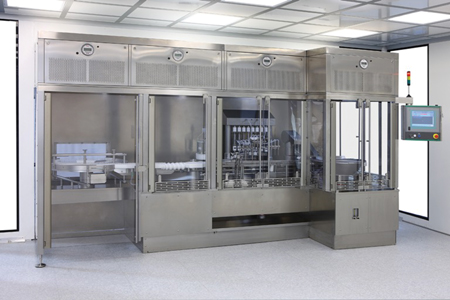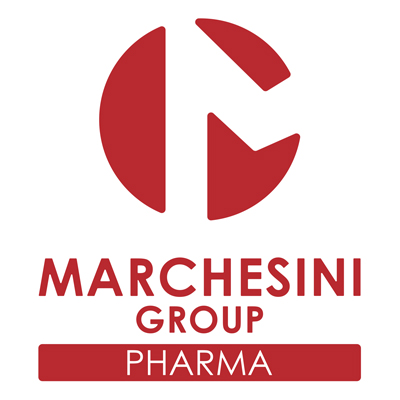The process equipment sector has felt the economic downturn as Big Pharma has merged and downsized. However, the market could be on the turn. Susan Birks reports.
In a recent survey of the pharma manufacturing industry, 62% of senior level respondents were ‘more optimistic’ about their revenue growth in 2013, according to US company Researchandmarkets. In its Global Pharmaceutical Market Survey 2013–2014, the research group said a significant percentage of respondents suggested that capital expenditure would increase in 2013.
Companies in the UK are also more optimistic, according to a recent survey of pharma manufacturers by Siemens Industry. The giant supplier of process technologies says its findings of growing sector confidence are reflected by ratings agency Moody’s revision of the pharmaceutical sector’s rating from ‘negative’ five years ago to its current status of ‘stable’ – reflecting expectations that the worst of the downturn is over and earnings are likely to rebound during 2013, says Siemens.
More than 34% of those involved in Siemens’ survey said they were planning to increase investment levels going forward and more than 47% said R&D would be the primary area of investment focus for 2013.
Meanwhile China’s pharmaceutical equipment industry achieved a gross industrial output worth RMB15.84bn (£1.7bn) – a 23.5% increase year-on-year, according to the China Pharmaceutical Equipment Industry Report, 2012–2015. Compiled by Research In China, the report forecasts that 2015 sales will reach RMB31.41bn (£3.4bn).
Increasingly, it is contract manufacturing organisations (CMOs) that are spending to meet the growth in outsourcing, and because the CMO business model relies on handling multiple projects, there is a growing trend for equipment that has a smaller footprint and offers rapid changeovers and easier cleaning between projects.
Manufacturers are also looking to make scale-up easier and quicker, and flexibility in scale is needed to meet growing demand for niche products and personalised medicines.
The move to more potent drugs has been notable for the past few years, as has the growth in biologicals. Both of these trends involve more specialised processing equipment. For high potency drugs, containment is key and has led to greater automation and the isolation of process lines – often a cheaper option than building large open processing suites in cleanrooms, but this can sometimes be at the cost of production flexibility.
Increased modularisation
Key to flexible manufacturing are easier and quicker cleaning and modularisation. Typical of this trend is the pre-engineered modular aseptic facility for the manufacturing of small-volume parenterals (SVP) that Telstar has designed with its sister company KeyPlants. Adaptable to pharma and biopharma process areas requiring both aseptic or contained conditions, it can handle either lyophilised powder or solutions, vials or pre-filled syringes. Conceived to be flexible, it enables further lyophilisation modules and a second line to be added without interruption to existing operations.
The modular concept can enhance the cost-certainty of the project and reduce overall time to market
'The modular concept is a growing trend for critical facilities and can enhance the cost-certainty of the project and reduce overall time to market for products,' says Telstar.
Manufacturers are also looking for technologies that increase sustainability and reduce energy consumption and move from batch to more efficient continuous processes. Simon Hickling, Senior Business Manager, DSM says: ‘Continuous flow chemistries are becoming more important in API manufacturing as the pharmaceutical industry focuses on sustainable manufacturing solutions and competitive cost-of-goods.’ Following its recent tie-up with Chemtrix, DSM now offers a turnkey solution to manufacturing in flow reactors from conception to cGMP bulk manufacturing.
The holy grail of continuous processing in most operations still has a long way to go and requires use of new process analytical technologies (PAT). Despite this, Martin Gadsby, Director, Optimal Industrial Automation, believes PAT is moving from an academic exercise to a practical reality.
‘Take-up is company specific and, in our opinion, the US is leading the field and EU companies are not far behind.’ Gadsby believes the UK is lagging in its adoption of PAT but says there are some interesting movements in the growing economies, driven in part by the generics manufacturers, who appear to be attracted by the commercial benefits of the technology.
‘We are probably close to a tipping point where the adoption of PAT practice starts to show significant commercial advantages, not just in the lab where product development and hence time to market can be greatly speeded up, but even more so in production where the benefits of operating a PAT system have the potential to slash costs and manufacturing time.’
There is no other technology or practice on the horizon that offers the magnitude of saving that PAT does and so its universal adoption in the life sciences industry is likely to be just a matter of time
The change he believes is because the industry spent the initial years concentrating on quality, and while this is of critical importance, ROI has taken the lead, driven in part by global economic pressures. ‘There is no other technology or practice on the horizon that offers the magnitude of saving that PAT does and so its universal adoption in the life sciences industry is likely to be just a matter of time,’ says Gadsby.
The rise in biopharmaceutical manufacturing has led to a new market for equipment for fermentation, cell harvesting, product purification, testing and validation, along with new single-use technologies (SUTs) for all phases of the biomanufacturing process. Corning, active in single-use plastic disposables used in the upstream area of bioprocessing, says companies are looking at how the classic stainless steel vessels normally used downstream can be adapted to single-use technologies.
‘SUTs mean lower maintenance costs, easier cleaning, less contamination and overall less investment and time taken to build a facility,’ says Corning’s Life Science Vice President and General Manager, Richard Eglen. ‘In this sector, processors face a particular issue of space, as the number of cells required is very large.’ Eglen also believes the industry will in future become a lot more automated: ‘This industry is going to go through a revolution of automation and for that it needs standardised, highly engineered products. We have seen this happen in the research labs but it has yet to come into the production area.’ Another issue for this sector is bottlenecks in the scaling-up of the biologics while ensuring they are of sufficient purity and activity. ‘The final process has to be highly reproducible,’ he says.
Global trends
The need to drive down cost without compromising quality is a key challenge for all sectors. Filling and tablet machinery developer Marchesini says a growing focus by national bodies on quality and safety criteria has led current injectable product technologies to become ‘obsolete before their time’. The company says the different configurations and layouts of the systems gave rise to issues of cost, ergonomics, washing and sanitising efficiency and actual ‘up time’ availability. In response it has developed an aseptic vial filling line, which it says meets the demands of a market requiring groundbreaking technologies in the sterile field. The line, which exploits many new technologies, processes 400 units/minute and consists of a rotary washing machine, a tunnel depyrogenator and a filler/stoppering machine.

Marchesini used groundbreaking technologies for the sterile field for this sterile vial line
I Holland MD Chris Prideaux sees the growth in developing markets as a driver for more globalisation of supply companies. ‘The relocation of facilities closer to developing markets and out of the high-cost developed world makes it essential that specialist suppliers can reach effectively into these markets and provide increasing levels of support,’ he says.
‘We are seeing the expanding globalisation of tablet production and opening up of developing pharmaceutical markets in Brazil, Russia, India and China.’ He also says the competitive environment is changing in the developed Asian markets. ‘These markets expect very high quality with exacting standards – not only should the product be right but it also has to look right, too.’ He says to maintain its status in these countries the company has to innovate, keep standards high and manufacturing costs low by producing units more efficiently and with less raw steel. But he is optimistic that this strategy is paying off. ‘Because we work to their expectations and continuously seek advanced technology and procedures we see consistent growth in the market,’ he says.





